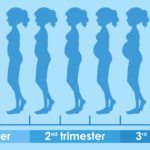Induction of labor or inducing labor refers to the use of medications of other artificial methods to start labor.
Doctors usually induce labor if labor has not started 2 weeks or more after the due date. If the labor is not started after the due date has passed, there can be risks to the health of the mother and/or the baby.
Labor induction involves ripening the cervix. This process involves using medications or devices to soften the cervix. This helps the cervix soften and thin out in preparation for labor. Doctors may try to induce labor by getting contractions started in the uterus.
Labor is induced using one of the following methods:
Stripping The Membranes
The doctor separates the thin tissue of the amniotic sac, which contains the fetus, from the wall of the uterus. Membrane stripping results in the body releasing hormones called prostaglandins, which help prepare the cervix for delivery and may induce contractions.
Giving Prostaglandin Hormone
This drug is inserted into the vagina or a tablet is given by mouth. The body naturally makes these hormones to ripen the cervix, but sometimes additional quantities of these are needed to help start the labor. This is usually administered overnight in the hospital to make the cervix ripe for delivery. Prostaglandin is either is given alone to induce labor or maybe used before giving oxytocin.
Giving Oxytocin Hormone (Pitocin)
Oxytocin is a hormone the body naturally makes that causes contractions. It is given to start labor or to speed up labor that has already started. This hormone is administered continuously through an IV. Doctors usually start with giving a small dose and then increase it until labor is progressing well.
Inserting A Catheter
Doctors insert a catheter (a small tube) with an inflatable balloon at the end of the cervix. The balloon is inflated to widen the cervix.
Amniotomy Or Breaking Your Water
This involves making a small hole in the amniotic sac with a small plastic hook. This causes the amniotic sac to rupture and water to break leading to contractions. If the cervix is ripe for labor, this usually sets on labor in a matter of hours.



